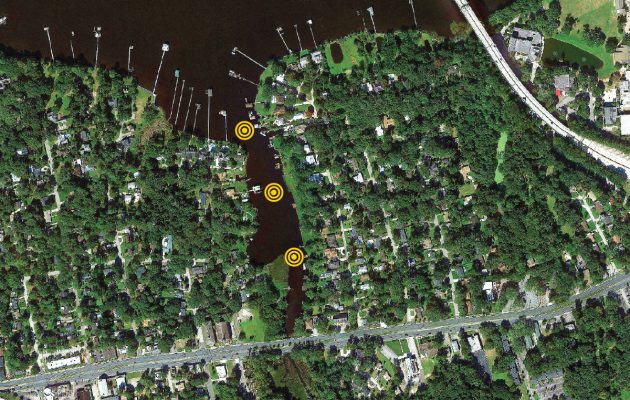Lack of quorum stymies Millers Creek board

With no quorum at the Dec.19 meeting of the Millers Creek Special District, the big issue discussed by the few board members who attended was what to do about getting board members to attend the meetings going forward.
Representing the board at the meeting, which was held at Cuba Libre Dance Club in St. Nicholas, were Chairman Rene Pulido, Secretary Sharon Johnson, and Derik Flint, three of the five members needed to make a quorum.
Because Board member Kay Ellen Gilmour had resigned verbally during a meeting Nov. 21, the seven-member board was reduced to six members going into its December meeting. Eyeing her 2017 calendar, Gilmour said she would be too busy traveling and didn’t think it would be fair to the board if she was not able to attend on a regular basis.
With the absence in December of Treasurer Christopher Rose, Jonathan Wright, and Danny Pulido, the board was unable to vote on any business. To conduct business and vote on issues, the board and needs at least five members to attend the public meetings.
The small group also discussed the possibility of reducing the number of board members to five, so that only three would be required for a quorum at meetings. To make the change, the board would need to write a new ordinance, said Wayne Flowers of Lewis, Longman & Walker, P.A, who represents the board.
Johnson said the board will discuss the quorum situation at its next meeting Monday, Jan. 16 at 6:30 p.m.
Not having a quorum hampered the board’s ability to vote on whether to move ahead with getting soil tests conducted in Millers Creek. Attending the meeting was Joe Wagner, senior dredging engineer with AMEC Foster and Wheeler, who had submitted a written proposal to do the soil sampling work. The cost of his services would be $6,201, he said.
The board does not need to review multiple bids for soil testing because the cost of the project is below a certain threshold, said Flowers. According to the Consultant Competitive Negotiation Act, services under $25,000 do not need multiple bids, Wagner said.
Because the board wanted to apply for funding from the city’s Environmental Protection Board, Wagner had hoped to receive approval during the meeting so his workers could start quickly, but was forced to wait to see whether the board grants approval in January.
In his proposal, Wagner said his firm would conduct a field investigation at three sample locations within Millers Creek, taking three composite samples of sediment. The samples will be submitted to a certified laboratory for analysis of nine heavy metals, pesticides, and petroleum hydrocarbons, as dictated by the Florida Department of Environmental Protection.
He said he was surprised when the DEP came back requiring a “whole slew of things to be done,” many more than is usual for a residential dredging project. Usually DEP only requires testing for arsenic, cadmium, chromium, copper, lead, mercury, nickel, silver, and zinc as well as polychlorinated biphenyls (PCBs). In the case of Millers Creek, they requested samples also be tested for 15 polycyclic aromatic hydrocarbons and 14 pesticides.
“It was way more than we normally need to do. I don’t know if word of JEA’s dumping had gotten to them. Perhaps they’ve been tipped off to something,” Wagner said.
Twice in 2016 – in May and July – Millers Creek residents caught Jacksonville Electric Authority employees dumping sediment into the creek. In October, JEA agreed to pay a fine of $6,400 for unlawfully discharging turbid water into the tributary.
Wagner said he had no expectation of finding any of the additional toxic materials DEP added to the soil test. He said DEP’s main concern was final disposal of the dredging material, which can be quite expensive if certain toxins are discovered. In a worse-case scenario, after water is removed from the contaminated soil, the sediment is transformed into concrete blocks and shipped to Alabama, he said.
Pulido and Flint discussed the possibility of finding the creek to be full of asphalt blocks. Flowers said, if that was the case, he’d suggest the board seek out the people or agencies responsible and get them to remove it.
By Marcia Hodgson
Resident Community News






